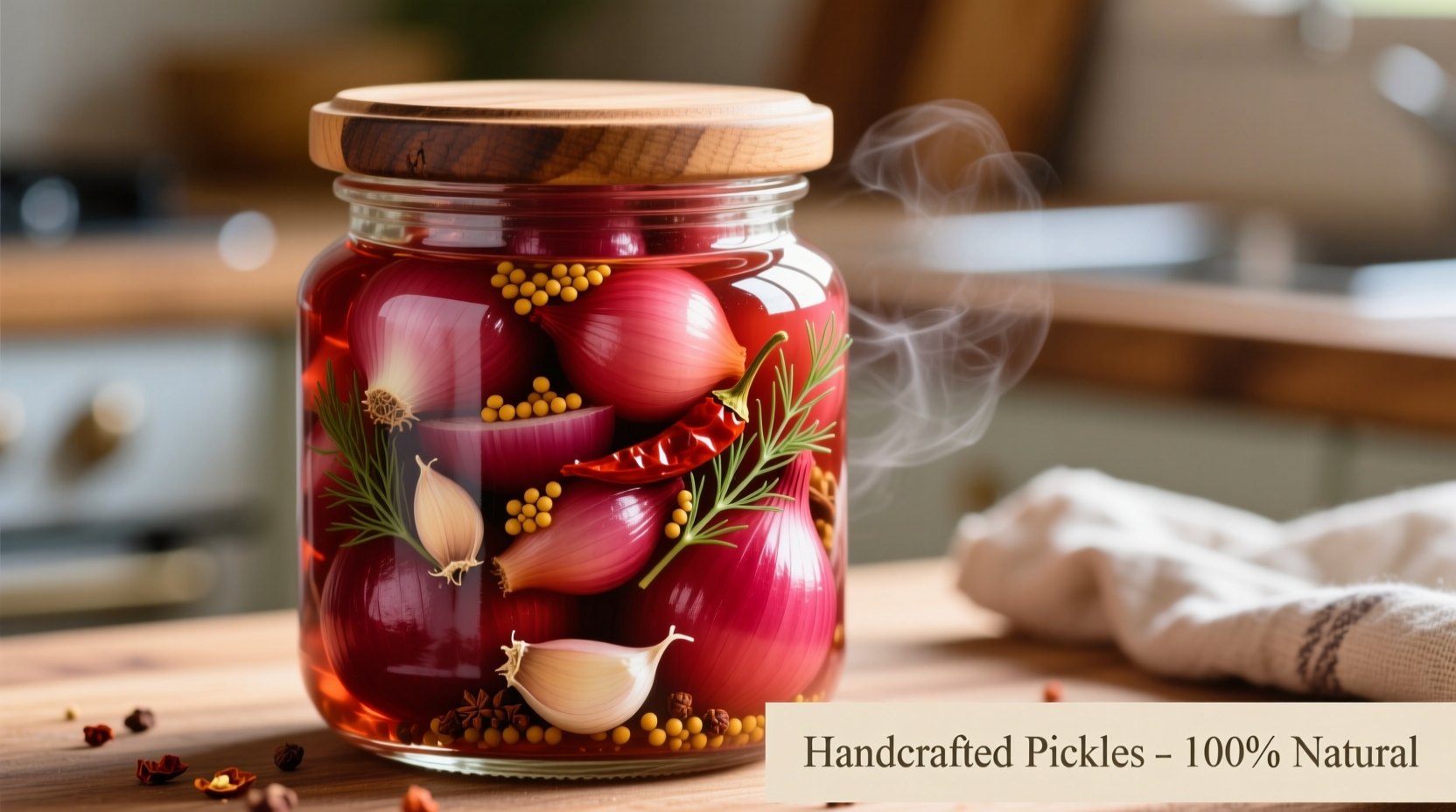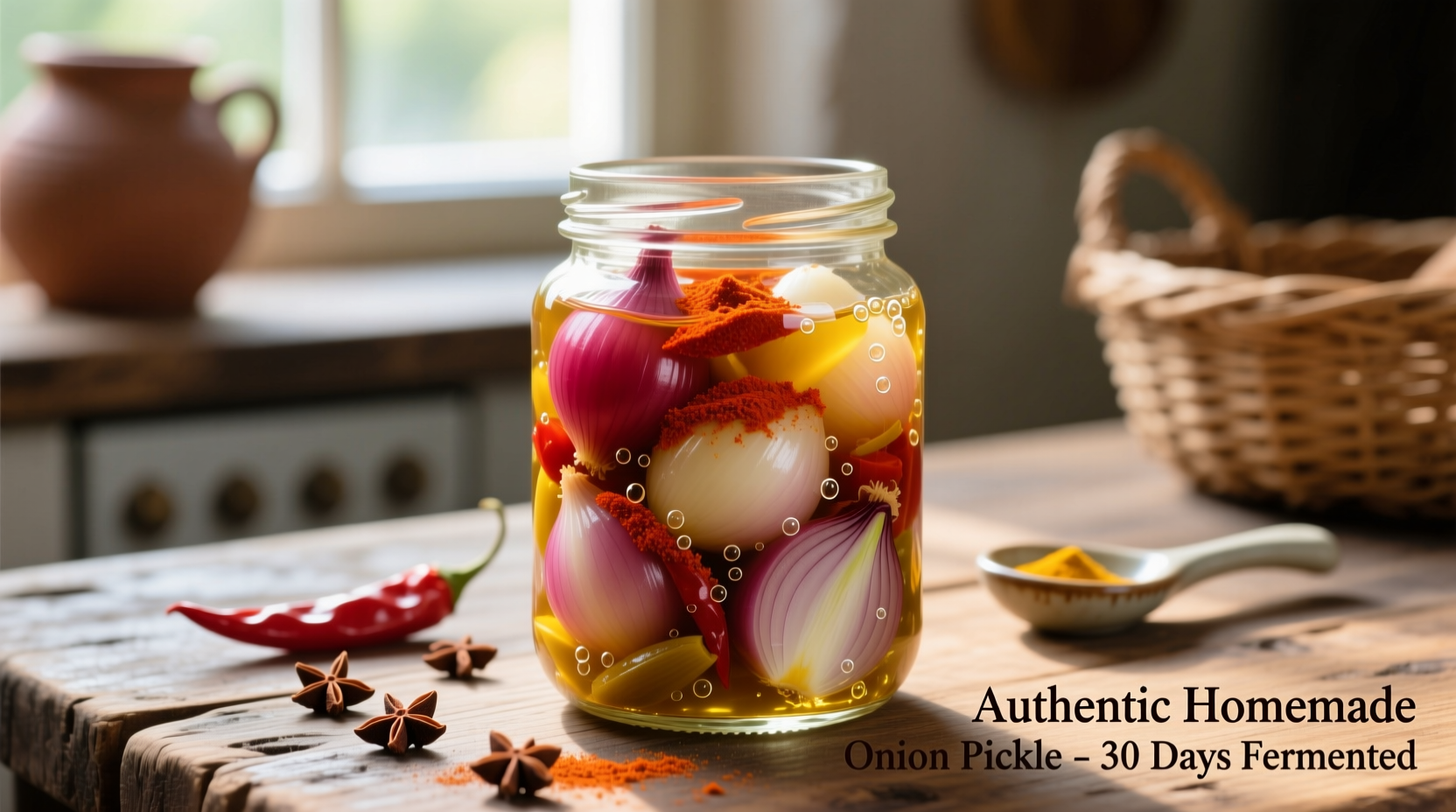Onion pickle is a preserved food product made by soaking onions in a vinegar-based solution with spices, creating a tangy, flavorful condiment that enhances many dishes while extending the shelf life of onions. This simple preservation method transforms raw onions into a versatile kitchen staple enjoyed across global cuisines.
The Essential Guide to Perfect Onion Pickle
Why Onion Pickle Belongs in Your Kitchen
Professional chefs and home cooks alike rely on onion pickle for its ability to add brightness and complexity to dishes. Unlike raw onions, pickled versions offer balanced acidity that cuts through rich flavors while maintaining their crisp texture. According to the USDA National Agricultural Library, the vinegar preservation process not only extends shelf life but also enhances certain beneficial compounds in onions.
Choosing Your Onion Foundation
Not all onions work equally well for pickling. The right choice depends on your intended use and flavor profile:
| Onion Type | Best For | Pickling Time | Flavor Profile |
|---|---|---|---|
| Red onions | Tacos, salads, sandwiches | 30 minutes-2 weeks | Vibrant color, medium heat |
| Pearl onions | Cocktails, holiday dishes | 2-4 weeks | Sweet, delicate |
| Shallots | Fine dining, vinaigrettes | 1-3 days | Subtle, complex |
| White onions | Mexican cuisine, salsas | 15 minutes-1 week | Sharp, clean bite |
The Science Behind Successful Pickling
Understanding the chemistry helps you perfect your technique. The University of Minnesota Extension explains that vinegar's acetic acid (typically 5-6% concentration) creates an environment where beneficial bacteria thrive while preventing spoilage. Sugar balances acidity, while salt draws out moisture and enhances flavor penetration. Spices like mustard seeds and peppercorns contain antimicrobial compounds that further preserve your creation.
Traditional Methods Across Cultures
Onion pickling has evolved differently around the world. Indian onion pickle typically uses mustard oil and fenugreek for preservation, while Mexican escabeche incorporates oregano and jalapeños. British piccalilli features turmeric for color, and Japanese beni shōga uses red shiso for natural coloring. Each tradition developed based on available ingredients and climate conditions affecting preservation needs.

Your Foolproof Quick Pickled Onions Recipe
This basic method works for any cuisine and requires just 15 minutes of active time:
Ingredients for Classic Quick Pickled Onions
- 2 medium red onions, thinly sliced
- 1 cup apple cider vinegar
- 1 cup water
- 2 tablespoons sugar
- 1½ tablespoons kosher salt
- 1 teaspoon whole black peppercorns
- 2 garlic cloves, smashed
- Optional: 1 dried chili, 1 teaspoon coriander seeds, or ½ teaspoon turmeric
Step-by-Step Preparation
- Prepare onions: Slice onions thinly using a mandoline or sharp knife. Separate into rings.
- Create brine: Combine vinegar, water, sugar, salt, and spices in a saucepan. Bring to simmer.
- Pour hot brine over onions in a clean glass jar.
- Cool to room temperature, then seal and refrigerate.
- Wait at least 30 minutes before using (flavor improves over 24-48 hours).
Flavor Variations for Every Cuisine
Customize your onion pickle for specific dishes:
- Mexican-style: Add 1 sliced jalapeño and 1 teaspoon dried oregano to the brine
- Indian-inspired: Substitute mustard oil for half the vinegar and add 1 teaspoon fenugreek seeds
- Sweet Asian version: Replace sugar with 2 tablespoons honey and add 1-inch ginger slice
- Mediterranean twist: Include 2 sprigs fresh thyme and 1 bay leaf in the brine
Storage Guidelines and Shelf Life
Properly stored onion pickle maintains quality for different durations depending on method:
- Refrigerator quick pickles: 3-4 weeks (most common home method)
- Fermented pickles: 2-3 months with proper salt concentration
- Canned shelf-stable versions: 12-18 months when processed correctly
Always use clean utensils when serving to prevent contamination. Discard if you notice mold, off odors, or significant texture changes.
Creative Uses Beyond the Obvious
While excellent on sandwiches and tacos, try these professional applications:
- Add to grain bowls for acidity that cuts through rich dressings
- Chop finely for relish on grilled fish or chicken
- Blend with mayo for instant gourmet sandwich spread
- Use pickling liquid as base for vinaigrette
- Top avocado toast for restaurant-quality presentation
Troubleshooting Common Issues
Fix these frequent onion pickle problems:
- Mushy onions: You've overcooked them or used too much salt. Try shorter brine time and precise measurements.
- Bland flavor: Increase spice quantities or let sit longer. Acid needs time to penetrate.
- Excessive sharpness: Add 1 teaspoon sugar to balance or use milder vinegar like rice vinegar.
- Color fading: Red onions lose vibrancy over time. Add a strip of red cabbage leaf to maintain color.
When Onion Pickle Works Best (and When It Doesn't)
Understanding context boundaries prevents culinary missteps:
- Ideal for: Brightening rich dishes, adding acidity to fatty foods, complementing grilled meats
- Avoid with: Delicate fish dishes where vinegar overwhelms, sweet preparations
- Substitute when needed: Quick-pickled shallots work better with poultry and creamy sauces
- Special considerations: Reduce salt if serving with already-salty foods like charcuterie











 浙公网安备
33010002000092号
浙公网安备
33010002000092号 浙B2-20120091-4
浙B2-20120091-4